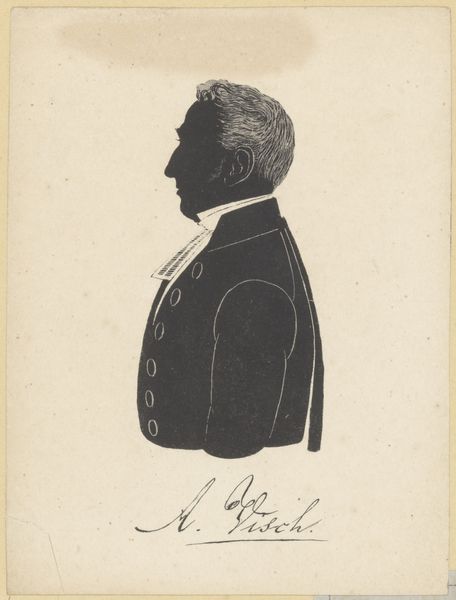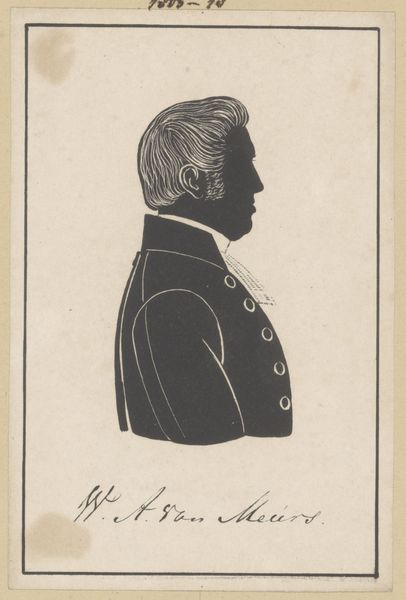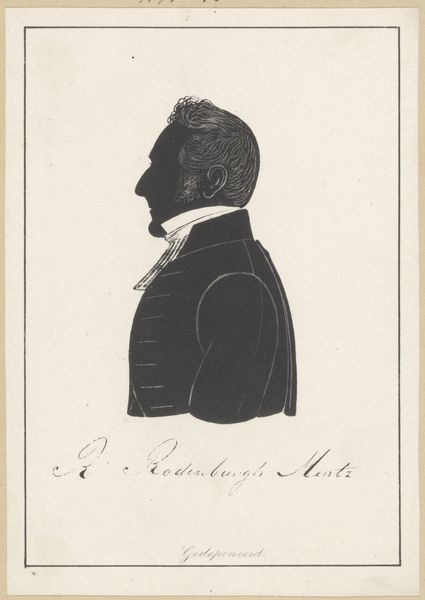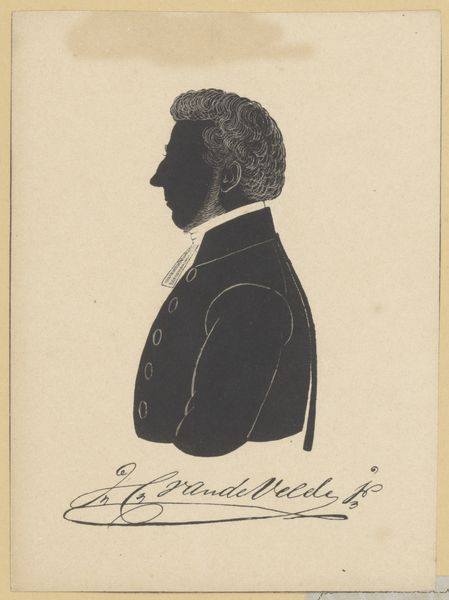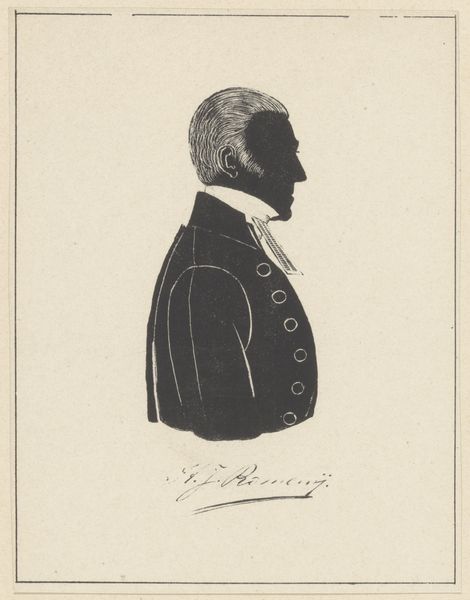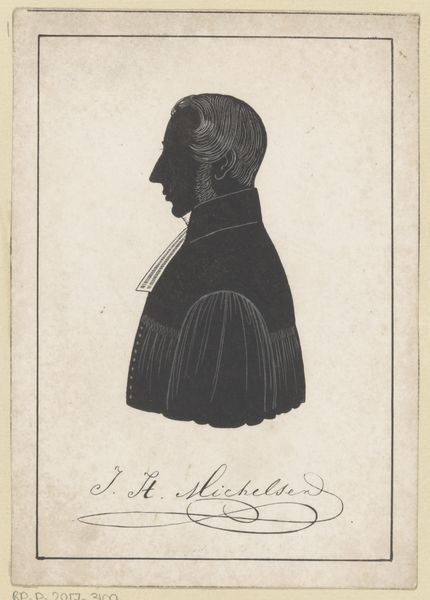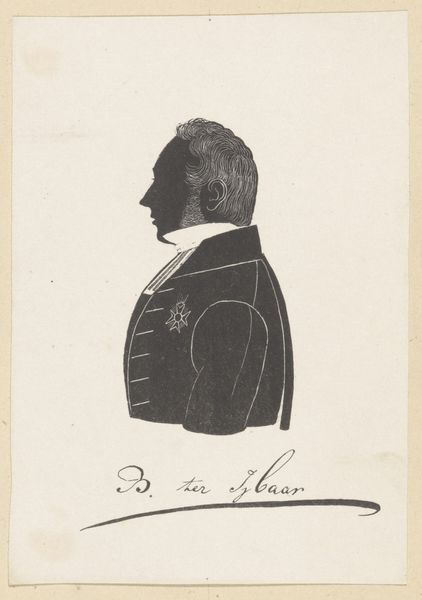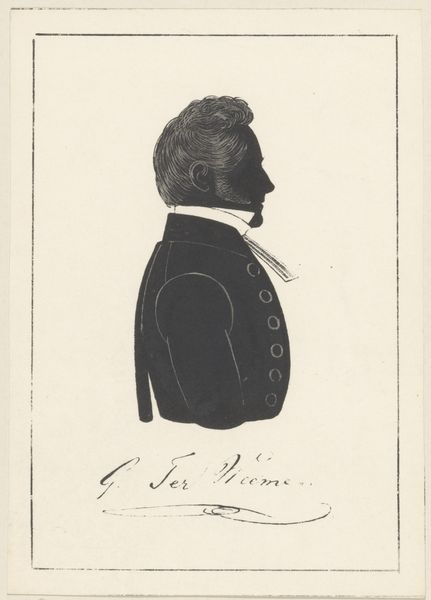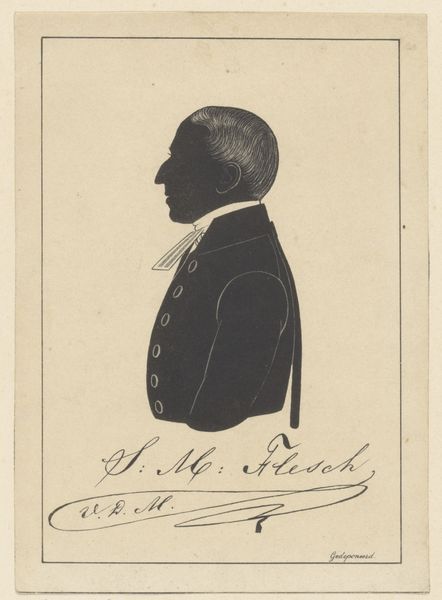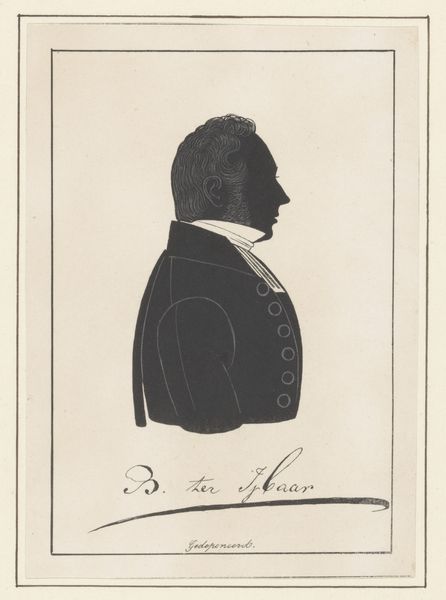
drawing, ink
#
portrait
#
drawing
#
figuration
#
ink
#
line
#
academic-art
Dimensions: height 146 mm, width 107 mm, height 193 mm, width 135 mm
Copyright: Rijks Museum: Open Domain
Editor: This is "Silhouetportret van Gerardus van der Flier," created between 1809 and 1848 by Pieter (IV) Barbiers. It's an ink drawing, a silhouette in stark black against a light background. I find it really intriguing how such a simple medium can be so evocative. What's your take on this portrait? Curator: It speaks volumes about the cultural landscape of the early 19th century. Silhouette portraits, like this one, became incredibly popular, offering a more affordable alternative to painted portraits. Consider this: the rise of the middle class created a demand for portraiture that was previously only accessible to the wealthy. What do you think that democratization of image production signifies? Editor: It’s interesting that you frame it as a shift in access. So, beyond just affordability, these silhouettes provided a means for a broader segment of society to participate in portraiture? Curator: Precisely. And that participation inevitably shapes how we understand representation itself. These portraits became signifiers of status and aspiration, contributing to a visual culture that reflected changing social structures. The very act of commissioning or owning such a portrait held social significance. Notice the sitter’s attire and posture: what do those details suggest about the sitter's standing? Editor: He seems very proper, with the high collar and formal coat. It projects an air of respectability and maybe even a bit of upward mobility, someone wanting to be seen in a certain light. Curator: Exactly. This piece prompts us to think about the power dynamics inherent in portraiture and how even seemingly simple forms like silhouettes participate in constructing and reinforcing social identities. We're not just seeing a likeness, but an active construction of self. Editor: That's a compelling point; it really reframes how I look at this piece, understanding it less as a mere image and more as a product and a reflection of its time. Curator: Indeed, and hopefully that perspective will influence your considerations of other artwork as well.
Comments
No comments
Be the first to comment and join the conversation on the ultimate creative platform.
